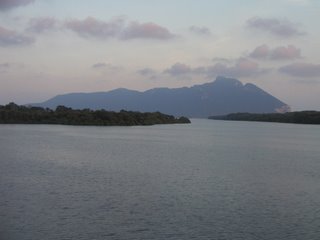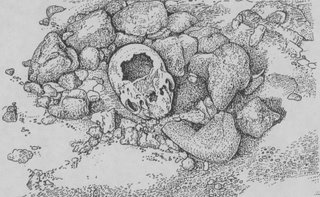
In this second chapter of our journey in the history of the Pontine plain, it is called the promontory of the Circeo. Here, indeed, are preserved the earliest evidence of human settlement in the history of the area. Circeo not only hides the little corners of paradise resort for the Homo sapiens of today, was also an island of rock in the middle of a vast plain where game abounded for the first Neanderthal hunting groups and the later prehistoric sapiens.
We talked about our neanderthal cousins \u200b\u200bin the previous article we have described them as a whole evolution of European Homo herectus that, perhaps because they are too specialized, has become extinct on arrival of Homo sapiens less specialized. What does it mean for us to be less specialized Neanderthal? This is not an offense, do not let us feel the branch of the unfortunate family. In the long run in fact, this child has done that encourages specialization in the conquest of the earth: Neanderthals were short and stubby limbs and torso to prevent loss of heat from the noses of large cracks that allow cold air to store and mix before push it into the lungs. In short, they were a product of evolution for cold climates.
Homo sapiens evolved from herectus in Central Africa and has conquered the world in a few thousand years. When he arrived in Europe, in full ice age, probably has "chosen" (it may be a precise term from evolutionary point of view) not physically fit but use creativity to "cover more" and "shelter better."
Homo neanderthalensis lived in Europe at the turn of the glacial (Riss and Wurm). The climate during this period was cooler and less hardened today, the Arctic ice caps also came to cover part of northern Europe and, consequently, this large amount of ice water to sea water subtracted. The level of the Mediterranean Sea was the lowest of the Pontine plain and was more extensive. During glacial periods the Circeo, there seem strange to imagine, had no water at his feet but a plain rich in rivers and marshes, the place of aggregation of small and large mammals. The promontory offered, therefore, a great deal of strategic points for hunting as well as natural shelters for many groups of people. It was, in essence, a balcony on a very full fridge.
between two glacial periods there was a warm period, often warmer than the current (which in fact is called tempered) called "interglacial" and during which the ice caps melted by raising the sea level even at higher levels than today's . In essence, when the climate became similar to the current tropical climates, the Circeo became an island as they appear today Ponza, etc. Ventotene.
was, consequently, in the glacial periods that had the maximum population on the headland just because of its strategic position and is also why, for a certain period of time, Neanderthals and Sapiens have lived and met right here on the Circeo and a few other places in Europe (as far as I know) during the last glacial period (see table depth). We can not know how, that is, if you've got a war or have lived together peacefully, if they have submitted or when they competed on the hunting grounds. What we do know is that the Circeo was one of the places where this encounter took place.
This story is written in the land filling of natural caves scattered on the headland. Here, the men who lived have left traces of their passage through the remains of food processing remains of stone tools and remains of homes.
One of these caves the first to be investigated, the cave was "Guattari" Neanderthal Hotel located on the coast.
The most famous prehistoric cave in central Italy was discovered during excavations for the works of burglary for the extraction of limestone at the base of the hill of Morrone (eastern end of the promontory) February 24, 1939. The first archaeologist to enter was Prof. Blanc recognized that a paleosol (a portion of land remained unchanged since prehistoric times) going back some 50,000 years ago. On the ground he found many fragments bones of animals and, above all, a fossil skull of Homo neanderthalensis, one of the first discovered in Europe and still today one of the most important. The skull had two tracks of mutilation: an orbit around the right eye and one around the foramen magnum, the point where the skull meets the spine. Prof. Blanc, by comparing the skull with the "prey" of Melanesian headhunters, spoke of "practice of cannibalism."

The excavation of the cave has also clarified everything from a temporal point of view. The cave was used by groups of neanderthal hunters between 75,000 and 55,000 years ago, after the abandonment, a landslide occluded the entrance of the cave and this was transformed into a hyena den at about 50,000 years ago when the head of an unfortunate Neanderthal man was transported to the den as a meal.
But despite his fame, Guattari cave is not the only important part of the Circeo. Cave "goats" for example, has, at about 8 m above sea level, a line that indicates the marine transgression (increase sea \u200b\u200blevel which isolated the Circeo) of the last interglacial (Riss-Wurm, see table) outlined by the traces of the dates of the sea, suitable for small holes along the walls of the cave. Still inside the cave, evidence of this warm period, were found fossils of hippopotamus. In the caves of Fossellone "," Breuil "and" Barbara "was able to read the passage between neanderthal and sapiens and their meeting. Besides that, thanks to the human remains, archaeologists distinguish the employment levels of two species of man, through the ruins of their stone tools.
To conclude our journey in Paleolithic times, we can highlight some discoveries of stone tools in the canal water averages between Latin America and Borgo Montello and Borgo Le Ferriere. In the following
Paleolithic Mesolithic, a period distinguished only in terms of archeology and that it is possible to discern the Circeo promontory on the south-west, in places Cava d'Alabastro in the small shelter Blanc.
The next step in the history of the plains will cover the transition to the Neolithic, when agriculture was invented. Take the stages that led to the oldest village in the region to Satricum (Borgo Le Ferriere) and try to understand its importance.
Dr. Mastroleo
ice ages and DATE
Below is a list of major glaciations that affected Europe. Recent studies have shown that glacial periods may have been more than four but those identified here are presented in geologic sediments of caves and thanks to changes in the coastline on the headland.
The period covered by this article are those of Riss and Würm
Pleistocene
- interglacial Donau-Günz (1.7 to 1.2 million years ago)
- glaciation Günz (1,200,000 to 700,000 years ago)
Middle Pleistocene
- Günz-Mindel interglacial (700,000 to 650,000 years ago)
- Mindel glaciation (650,000 to 300,000 years ago)
- integlaciazione Mindel-Riss (300,000 to 250,000 years ago)
- Riss glaciation (250000-120000 years ago)
Pleistocene top
REFERENCES:
The prehistoric caves.
Foundation ZEI
File in distribution within the permanent exhibition "Homo sapiens and Habitat" c / o Tower of the Templars, S. Felice Circeo (LT)
or visit Link: